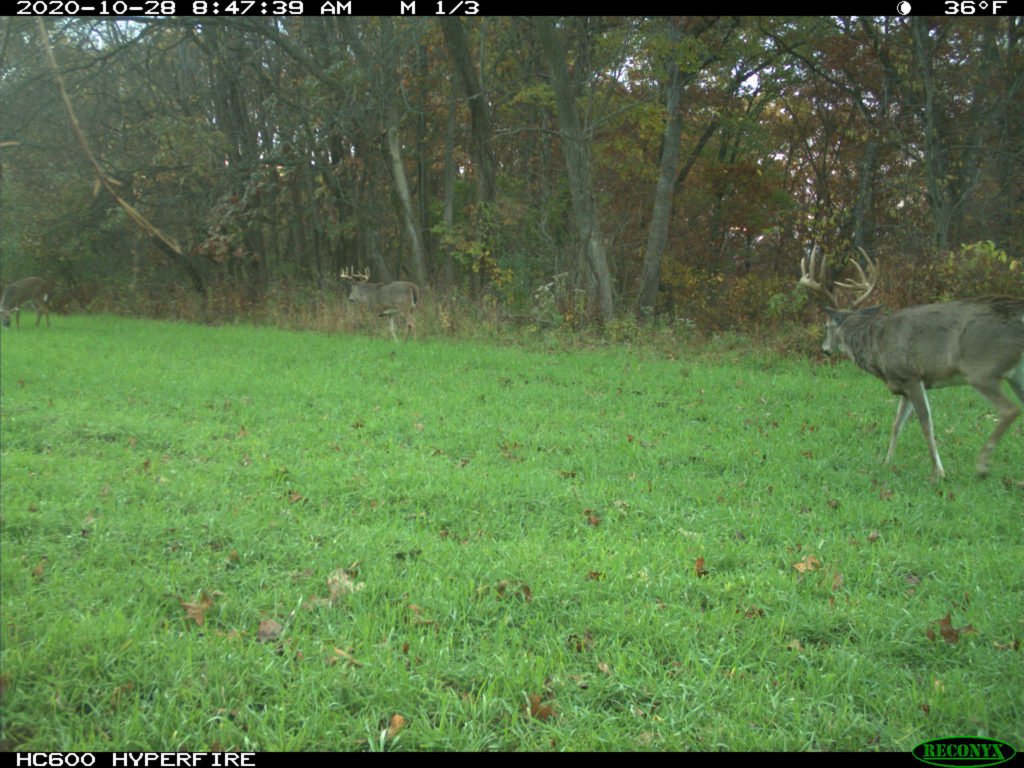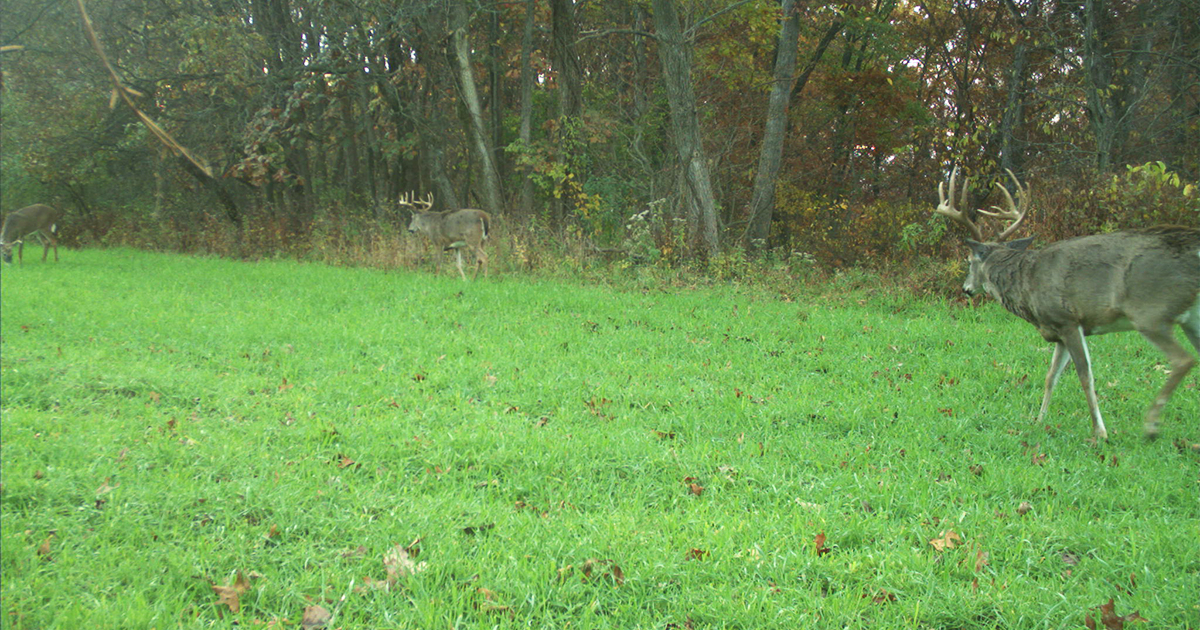Anyone that’s hunted more than a few years has likely heard a variation of, “you can’t pattern rutting bucks.” I’m here to say that’s flat out ridiculous, and I’ve tagged a bunch of rutting bucks I was after that would agree with me! Here is how I pattern rutting bucks.
This is Chapter 20 of Steve Bartylla’s free online book, Understanding Mature Bucks.
Last chapter we talked about how “experts” have a very high tendency to spew pure horse droppings about how they “pattern” the deer they tag. Instead, real-world patterning of Mr. Big is merely having a momentary glimpse into one or more of the things he tends to do on at least a somewhat regular basis. In fact, most all of this entire book has really been about “patterning” Mr. Big. Understanding what makes him tick and that everything is in near constant change over deer season are both keys to “patterning” him.
Those that have been following along already read the chapter on how Mr. Big uses a rutting strategy of sorts to minimize wasted efforts and maximize the odds of breeding. He typically does so by checking the doe concentration points for whatever time of day he’s looking for them.
Could someone please explain to me how that isn’t a pattern? Now, just like early and late season, not every buck is going to stick to those “patterns” like glue. Some will more so than others and some I flat out haven’t been able to figure out at all, just like some early- and late-season bucks. Also like those early- and late-season bucks, a whole bunch of stuff can temporarily or permanently throw them off their patterns, such as spending a day tending a doe or being driven off by a more dominant buck. Still, just because it isn’t farmer Joe deciding to cut firewood near where Mr. Big is bedding today, that messing up his patterns doesn’t mean it’s still not a pattern, at least as much as any other time of season.
For those that missed it, you may want to read a previous chapter on how Mr. Big finds estrous does, as that right there is how we pattern them, simply by knowing how they go about getting what they want and being there in wait.

Patterning rutting bucks is really all about adding how bucks find does with hunting doe concentrations and, if you have it, topping it off with the historical way he and past Mr. Bigs worked the dirt and we’ve got it. Sure, most times before I go to try to arrow Mr. Big at the family group bedding area, I already know Mr. Big is checking it, as I’ve got a bunch of pics of either him doing just that or on cams a distance away, catching him as he is presumably going to or from checking on the girls. At the same time, I likely have a history with the dirt telling me that will be the case.
When I have history, I really don’t NEED any intel on Mr. Big, as I am supremely confident that he will be checking the family group bedding area I’m hunting, at some point during legal light, within a week’s span. I don’t need pics to know that, as the girls have bedded there for years and every mature buck in the area knows it, and we KNOW how Mr. Big finds estrous does. He does it by checking the known doe concentrations. Well, that family group bedding sure is one and you can bet he knows about it. When are does hanging in their bedding areas most often? Yes, obviously during daylight. So, you can bet Mr. Big will be checking them there, unless he has lost his drive to breed, which happens occasionally.
How about the funnels between family group bedding? If it’s the best route between the two, odds are good you’ll be able to find him there, during daylight, at multiple points during the rut. Of course, the same will apply to the food sources does concentrate around. Again, all sorts of stuff momentarily and even permanently throw them off of these patterns, but how in the world are they any less compelling than early- and late-season patterns? Frankly, with close to half or more of bucks I’ve chased during the rut being more patternable than any other time of season, I firmly believe that many, if not the majority of bucks stick to patterns during the rut more so than any other time of season.
As mentioned, actually patterning rutting bucks was really covered in the early chapter on how Mr. Big approaches and effectively deals with the breeding phase. The big one in this chapter is really just reminding you all of that, as well as making my case for bucks being patternable during the rut, and hoping you will be able to use that to your advantage. Many race to kill bucks before the rut, as they will go “crazy” then and end up God only knows where. Well, it sure doesn’t take God to tell us where Mr. Big will be during the rut, when trying to find girls. He’ll be where they typically are, during that specific time of day, when he’s not bedded, and THAT is a pattern!
Before we wrap up, I need to stress something a bit more than I have in these two patterning “chapters.” Remember earlier in the “book,” when we were talking using history to zero in on seasonal shifts, shifting core areas, where Mr. Big beds and a host of other stuff? Remember how we covered using history to anticipate and what a great teacher it is?
In my mind, THAT is patterning deer. There’s really two ways to “pattern” deer. One is to learn what a specific deer does. The other is to track the history of the ground and allow that to reveal the overall pattern of how mature bucks use the dirt. Track and you’ll find that, like history, mature buck patterns repeat themselves far more than most likely realize.
When it comes to all of this stuff, I’m going to use every bit of solid data I can get my hands on. When possible, meaning I have history with the dirt, I use both insights into the specific buck I’m after AND insights into the history of how mature bucks use the dirt to the fullest extent I can. That’s the case regardless of whether I’m trying to pattern Mr. Big during the rut or any other time of season.
Don’t make the mistake of discounting history. It’s way more powerful than it’s advertised, even by me.
One last thought on all of this is that, we already know that the photoperiod is the true dictator of when does enter estrus. Still, weather conditions certainly can inspire Mr. Big to look for does as well as stop them during the hotter portions of the day during unseasonably hot stretches. None of that has anything to do with does being in or out of estrus, but do we care if it’s just the weather inspiring Mr. Big to check the family group bedding, assuming we’re waiting for him, despite it really being the weather that got him up, and not estrous does? Speaking for myself, so long as it ends happy, I could care less. In other words, be sure to factor EVERYTHING into your hunting decisions, including during the rut. Doing so can truly help fill a lot more tags.
Read Chapter 1: Whitetail Tendencies
Read Chapter 2: Whitetail Home Ranges
Read Chapter 3: How Deer Use Core Areas
Read Chapter 4: When Core Areas Shift
Read Chapter 5: Seasonal Shifts
Read Chapter 6: Family Group Dominance
Read Chapter 7: Male Dominance
Read Chapter 8: Deer Population Dynamics
Read Chapter 9: Deciphering Deer Breeding Phases
Read Chapter 10: Big Deer Breeding Behavior
Read Chapter 11: Whitetail Rut Stress
Read Chapter 12: How Deer Deal With Winter Stress
Read Chapter 13: Master Whitetail Phases
Read Chapter 14: Don’t Overthink Deer Behavior
Read Chapter 15: The Weather Factor
Read Chapter 16: Pressure-Cooker Whitetails
Read Chapter 17: Use Pressure to Your Advantage
Read Chapter 18: Program for Deer Hunting Success


